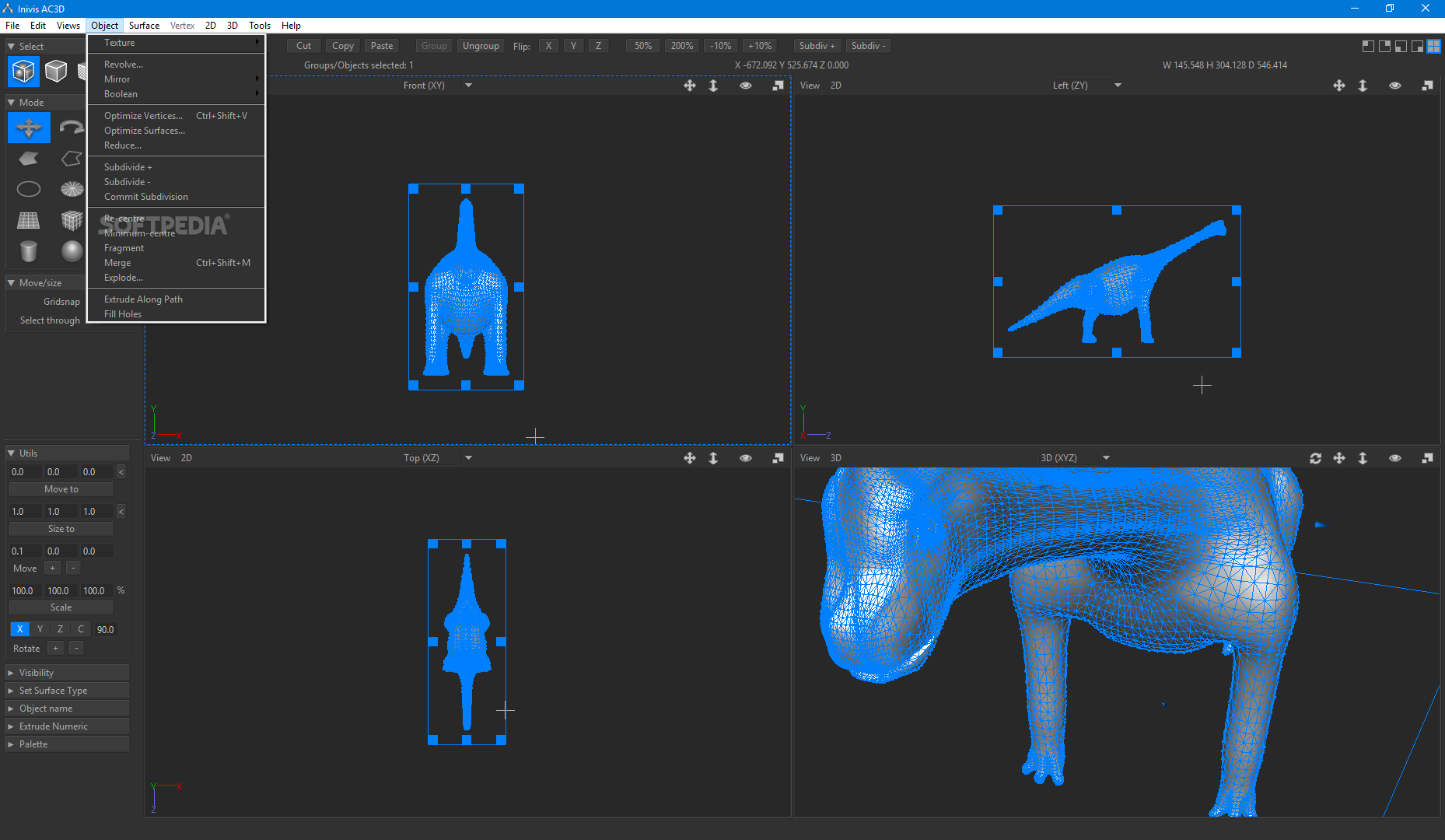
Let's say that it is in a file named beacon.ac. This is necessary when you want to make certain objects rotate or change their size or illuminate them after nightfall or anything like that.įor example, you might want to load a beacon. If you write an XML file for your AC model (which you always should), you might want to refer from the XML file to certain objects in the AC file. If you want to use a different texture altogether, give it the respective name like texture "thenewtexture.rgb". For example, if you now want to use a PNG version of this texture, change the line into texture "livery.png". Texture "livery.rgb" If you have defined this texture and now you are unhappy with it, simply change the file name and the model will use the new texture. Texture lines are found anywhere throughout the AC file and look like this: Make things transparent, even without using a texture. Trans 0 With transparency it get really interesting again. In general highly polished materials would have higher number, while for example rubber or textile would have lower number. Shi 128 Shi stands for shininess, it determines the size of the specular spot.
#BLENDER TO AC3D FULL#
In the example, specular is set to full green. When you view the object that will form a specular spot on the object, the color of the specular spot is what is set here. Spec 0.2 0.2 0.2 Specular means the direct reflection of light from sun/moon to the surface of the object and then to the viewer. In total dark, the model shines red only, in light it is yellow and red. Here, I have set the emission to full red and nothing else.

So in our example, the amb value should be 0.5 0.5 0.5, just like the rgb one.Įmis 0 0 0 Emission makes things glow.

If you leave it at amb 0.4 0.4 0.4 after exporting it with the SketchUp to AC3D exporter, the surface will be all grey when the sun does not shine directly on it. As of FlightGear 2.0, the amb setting should duplicate the rgb one. In the example to the right, I have changed the ambient (not the color) to full blue. the reflection of sunlight is (almost) not affected. You will see the textures whiteish in SketchUp, but correctly after export ( Correct display of texture colors in the AC file).Īmb 0.4 0.4 0.4 Ambient: The ambient is the color of the light that falls indirectly onto the material, i.e. Or you can set the color of the texture to rgb 1 1 1 already in SketchUp.That means that you have to change them every time you export the model. Change the colors to rgb 1 1 1 after export.The suggested RGB setting for textures is 1 1 1, which shows the colors on the texture excactly as they were drawn. Of course you can make them in the AC file as well: Open > Edit > Save, done. Those RGB values can go from 0 to 255, so divide by 255 to get the value appropriate for AC files.) The examples on the right have been made with the Bo105 material dialog (when using the model, press Ctrl+ Y to open it). In the example to the right, red and green make yellow. Red Green Blue (of which the color is composed) are all medium strong. Rgb 0.5 0.5 0.5 Color: This material is medium grey.

We will now go through that line bit by bit: ac files produced by the SketchUp to AC3D exporter. This line defines the material default for all poly structures that use this material. When you open an AC file in a text editor, you will see a number of material lines like this: It can read and write *.ac files, but a written file may lack UV mapping or have other defects. This is a converter for all plib supported 3D formats and comes with FlightGear (see utils/Modeller/3dconvert.cxx). Compiling ppe may be a challenge, though, and it's only useful for viewing, but hardly for editing objects. This has the advantage that objects look very much like in FlightGear (minus shader effects and shadows). PrettyPoly (ppe) is an unmaintained object editor that uses the same graphics library as FlightGear (plib). The osgviewer demo in the Open Scenegraph Library is very useful for quickly looking at models. While Blender dropped built-in support for the AC3D file format after version 2.5, third-party add-ons have been developed to maintain support for the file format.
#BLENDER TO AC3D FREE#
See Howto: Working with the AC3D file format in Blender for the main article about this subject.īlender is a free and powerful 3D editor.


 0 kommentar(er)
0 kommentar(er)
